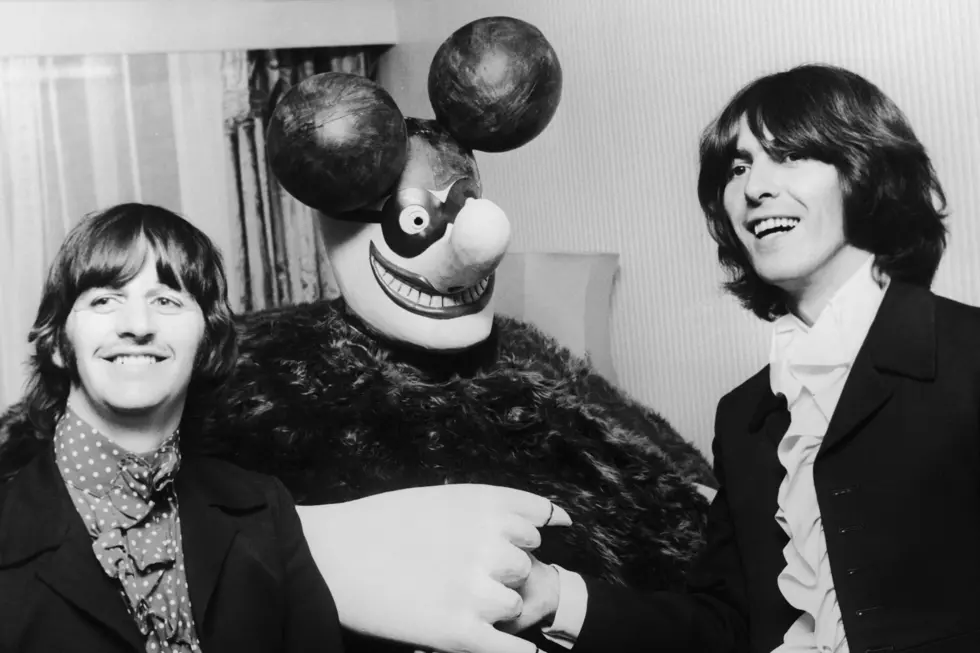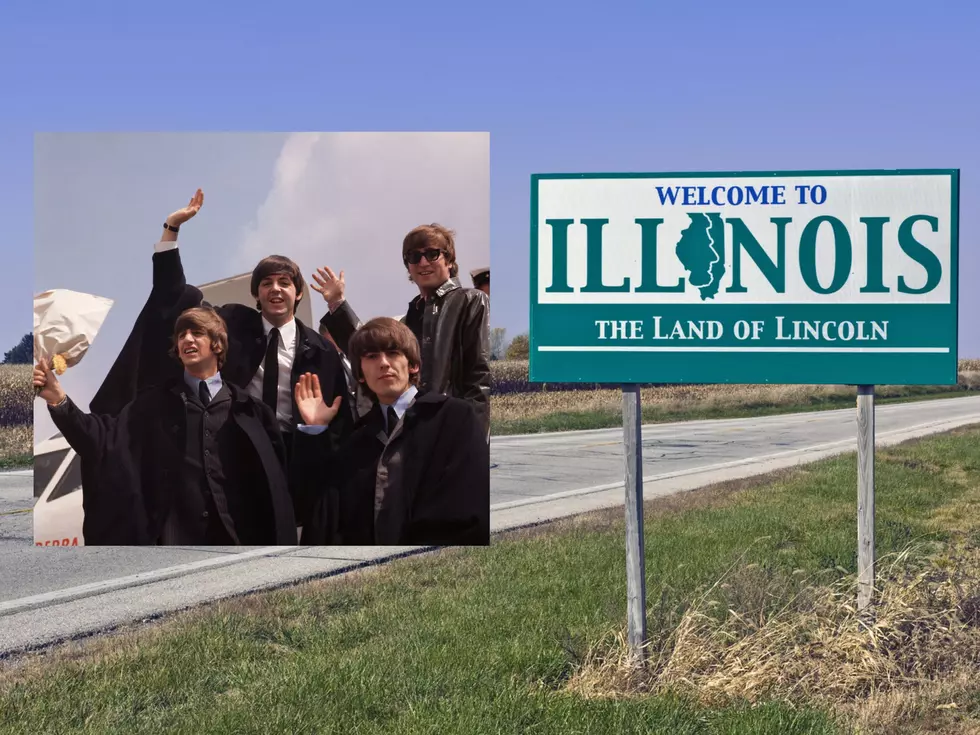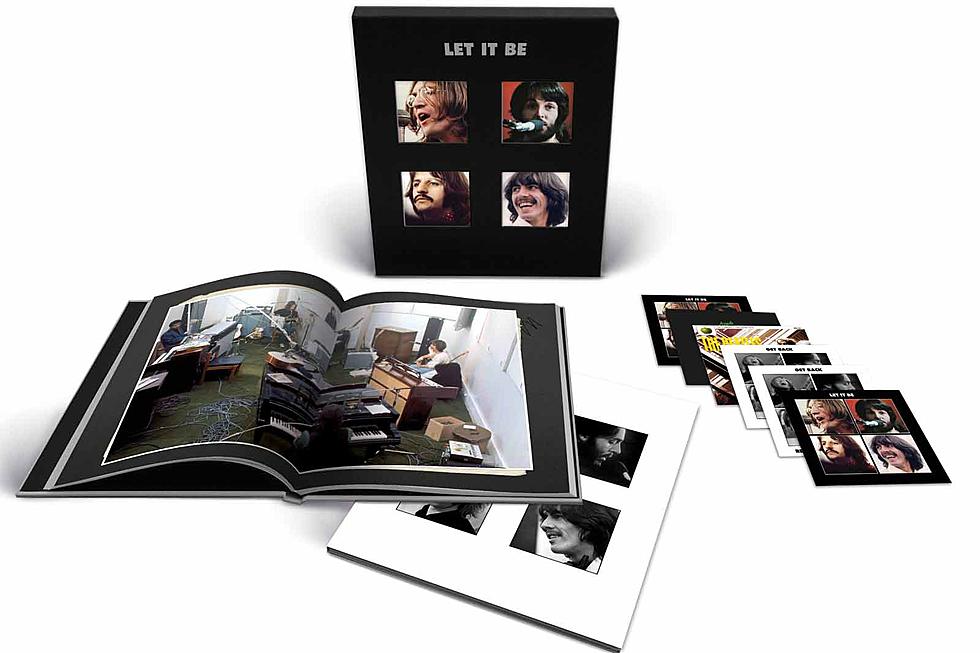
When the Beatles Got Animated for ‘Yellow Submarine’
The deal that put the Beatles into the movies called for them to make three films for United Artists. But after the commercial and critical success of A Hard Day's Night in 1964 and the not-quite-as-good sequel Help! a year later, the foursome didn't particularly feel like making another one.
So, they outsourced the project to someone else, who took one of their songs and built an animated movie around it.
Yellow Submarine was primarily the brainchild of George Dunning and Al Broadax – the same duo that spearheaded the Beatles cartoon TV series that aired in the U.S. from 1965-69 – along with art director Heinz Edelmann and Lee Minoff, who wrote the story. But the Beatles wanted as little involvement as possible, so actors were brought in to recreate their voices.
As George Harrison pointed out, it may have been a blessing. "The actors probably did it better because they needed to be more cartoon-like," he said in Anthology. "Our voices were pretty cartoon-like anyway, but the exaggeration that you've got with the actors' voices suits it."
Watch the Beatles' 'Yellow Submarine' Sequence From 'Yellow Submarine'
Minoff's story is set in Pepperland, an underwater music-filled utopia protected by Sgt. Pepper's Lonely Hearts Club Band. It then comes under attack from the from the music-hating Blue Meanies, who freeze all of its inhabitants. An aged sailor, Old Fred, escapes and takes off in the submarine to Liverpool, where he convinces the Beatles to defeat the Blue Meanies. The Beatles leave Liverpool in the submarine and undergo a series of surreal adventures to get to Pepperland, including going back and forward in time, fighting off a monster and befriending a lovable creature named Jeremy Hillary Boob, Ph.D, who eventually helps them emerge victorious.
Josh Weinstein, who was a writer and producer for The Simpsons in the '90s, marveled at its technical innovations. "The artists and directors used techniques no one had ever used before, and haven't since," he told the Guardian in 2012. "They used media no one had ever thought of using in animation. The sequence where the sub takes off from the pier and appears to travel rapidly through all sorts of live-action settings, including a park where a statue of a military man astride a horse appears to tip his hat to you, was all done using postcards. If you freeze-frame it, you can see some of the brilliant tricks they came up with."
"The animation ... isn't full motion and usually remains within one plane, but there's nothing stiff or limited about it," Roger Ebert wrote when the movie was restored in 1999. "It has a freedom of color and invention that never tires, and it takes a delight in visual paradoxes."
Watch the Beatles' 'Eleanor Rigby' Sequence From 'Yellow Submarine'
The decision to draw upon the whimsical psychedelia of the era originally didn't sit well with Paul McCartney. "I wanted Yellow Submarine to be more of a classic cartoon," he recalled in Anthology. "I love the Disney films, so I thought this could be the greatest Disney movie ever - only with our music. ... Luckily, it wasn't my decision. Looking back on the film, I do like it now. It's really quite interesting. They felt they ought to pick up on where we had been up to, which was Sgt. Pepper – but a Bambi would have been better for me at the time."
Broadax and Minoff wrote the screenplay, with assistance from Jack Mendelsohn and Erich Segal, who would soon go on to greater fame with Love Story. But the most important contributions to the script arguably came from an uncredited Roger McGough, a Liverpool-based poet and contemporary of the Beatles, who punched up the Beatles' dialogue with a heavy dose of typical Liverpudlian humor.
Watch a Video About the Voices Heard in 'Yellow Submarine'
"The story avoids the usual gee-whiz urgency of so much animation and reflects the same deadpan understatement that the Beatles used in A Hard Day's Night," Ebert noted. "Perhaps because the Beatles were considered such a draw, perhaps because the songs were counted on to sell the film, there was no agenda to dumb down the material or hard-sell the story. Instead of contrived urgency, there's un-pressured whimsy, and the movie exists as pure charm, expressed in fantastical imagery."
Sixteen Beatles songs – from Rubber Soul and after – as well as an instrumental score by producer George Martin, were included in the movie. Two new Harrison tracks, "It's All Too Much" and "Only a Northern Song," were integrated into the story, while a third, John Lennon's "Hey Bulldog," was cut from the U.S. version to keep the movie's length less than 90 minutes. The fourth new song, McCartney's "All Together Now," came at the end of the movie – a contractually obligated appearance that was filmed on Jan. 25, 1968, at Twickenham Film Studios.
Watch a Video About the Design of 'Yellow Submarine'
Yellow Submarine had its world premiere on July 17, 1968, at the London Pavilion; its soundtrack – with the four new songs, Martin's score, the title track and "All You Need Is Love" – arrived six months later. The movie's 1999 restoration was accompanied by a theatrical and home-video release, along with the Yellow Submarine Songtrack. That project replaced Martin's score with every song included in the movie, save for "A Day in the Life."
Just as A Hard Day's Night proved influential in the eventual development of the music video, Weinstein opined that the film "gave birth to modern animation itself. Before Yellow Submarine, animation was a mild, goody-goody world of personality-free gloved mice and cartoon bears stealing picnic baskets. ... But after Yellow Submarine, it was a wholly different world. It wasn't just for kids. It was satire and art and, most of all, subversion. Without Yellow Submarine, there would never have been The Simpsons, no Futurama, no South Park, no Toy Story, no Shrek. No animated anything that enables us to laugh at ourselves while being highly entertained."
Weinstein may be overlooking the influence of The Adventures of Rocky and Bullwinkle and Friends, which debuted in 1959, nearly a decade before Yellow Submarine. Still, there's no denying that its appeal to young and old, both through music and visuals, has kept the movie relevant over the years. Or as Harrison put it, "The film works for every generation – every baby, three or four years old, goes through Yellow Submarine."
The Best Song From Every Beatles Album
You Think You Know the Beatles?
More From 96.7 The Eagle










